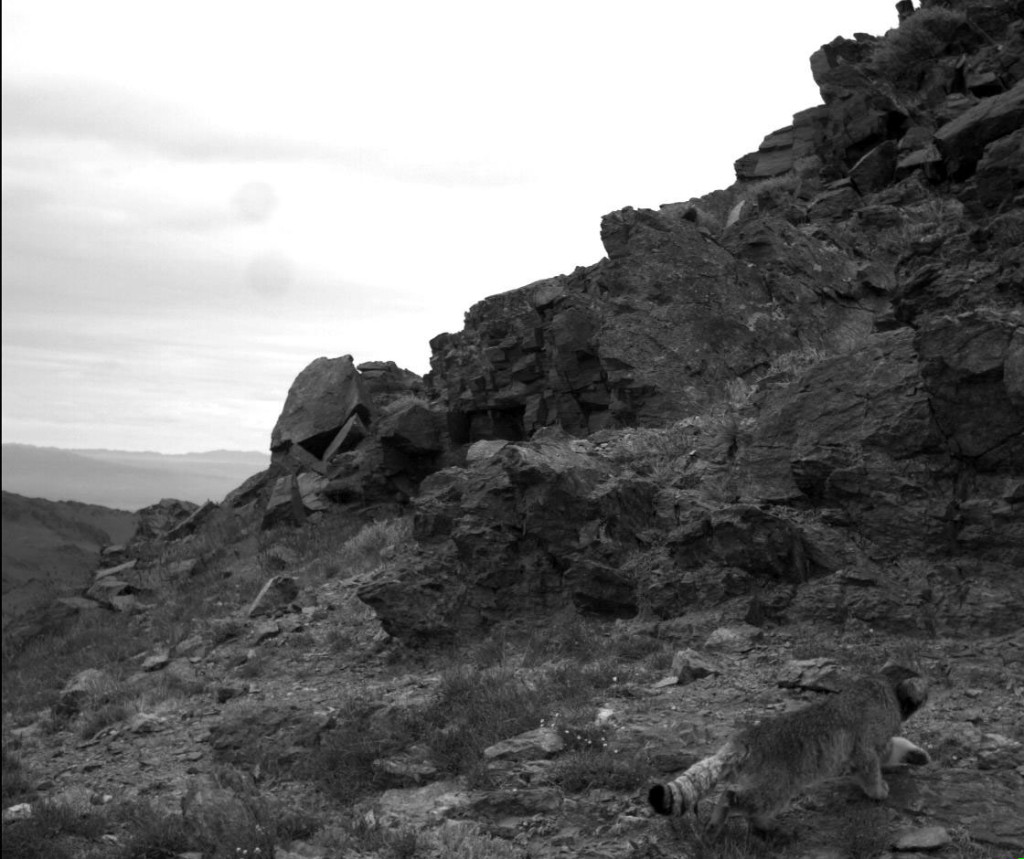The Snow Leopard Trust has been surveying Mongolia’s Tost mountains with remote-sensor research cameras for many years in order to monitor the area’s snow leopard population. These cameras have also taken hundreds of photos of other species that share the same habitat, such as the Pallas’ cat – a small feline that is as elusive as the snow leopard, but even less well understood. We are excited to now share and analyze this valuable data in collaboration with the Royal Zoological Society of Scotland, and Sweden’s Nordens Ark Zoo.
In 2008, the Snow Leopard Trust launched the first-ever long-term study on snow leopard ecology in the Tost Mountains in southern Mongolia to address critical knowledge gaps for this elusive cat that is often referred to as the ghost of the mountain. Remote-sensor camera surveys have been an integral part of this study from the very beginning.
Nordens Ark has been an important partner of the study in the Tost Mountains since 2011. Starting this year, we have expanded this collaboration to include research on the smaller and equally elusive Pallas’ cat – a species whose ecology is virtually unknown, which has led our researchers to affectionately call it the ‘small ghost of the mountain’.
The expansion to include research on Pallas’ cats also includes a collaboration with the Royal Zoological Society of Scotland and their connection with the Pallas Cat Working Group. By using the network and logistical support of Snow Leopard Trust and the expertise on Pallas’ cats at Royal Zoological Society of Scotland, we will maximize the conservations efforts and use the resources in a way that that will benefit both species.
“Pallas’ cats are one of the least studied cats in the world and there is a large need for information on which to build conservation plans for this rare and elusive cat”, says Gustaf Samelius, the Snow Leopard Trust’s Assistant Director of Conservation. “The need for such information is illustrated by the fact that the distribution of Pallas’ cats is still largely unknown and that Tost mountains, where we have photographed this feline isn’t even included in current distribution maps”, he adds.
In 2014, Snow Leopard Trust researchers also found the Pallas’ cat on several research camera photos from Sarychat Ertash nature reserve Kyrgyzstan – the first ever photographic proof of its presence in that area.
“That’s yet another sign that there’s a lot of work to do for us to understand this cat”, Gustaf says.
The objectives of the new collaborative study on Pallas’ cats are to help improve our understanding of the distribution and basic ecology of the species (e.g. association with other species) and to improve survey techniques by testing attractants to increase the likelihood of observing this rare and elusive animal.
The work will be based on camera studies and interviews. The first step is to work with the existing camera data from the Tost Mountains to screen for Pallas’ cats and to test animal recognition software as a means to screen the large number of photographs generated from camera studies (many of which may be blank of or “non-target” species such as goats and sheep).
Building on the experience from previous (snow leopard) camera studies, we also hope to do a camera study focused on Pallas’ cat in the Tost Mountains in the future.
source


No comments:
Post a Comment